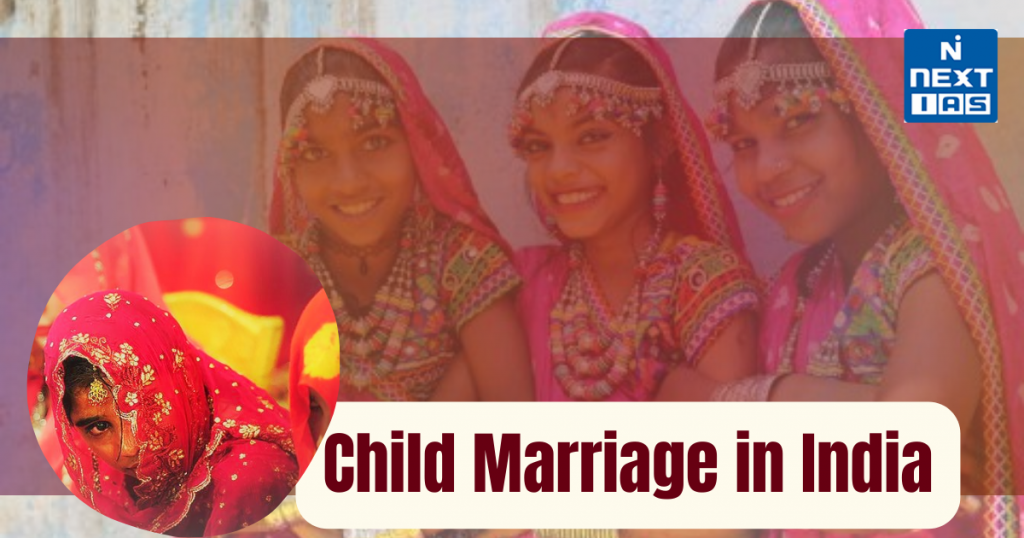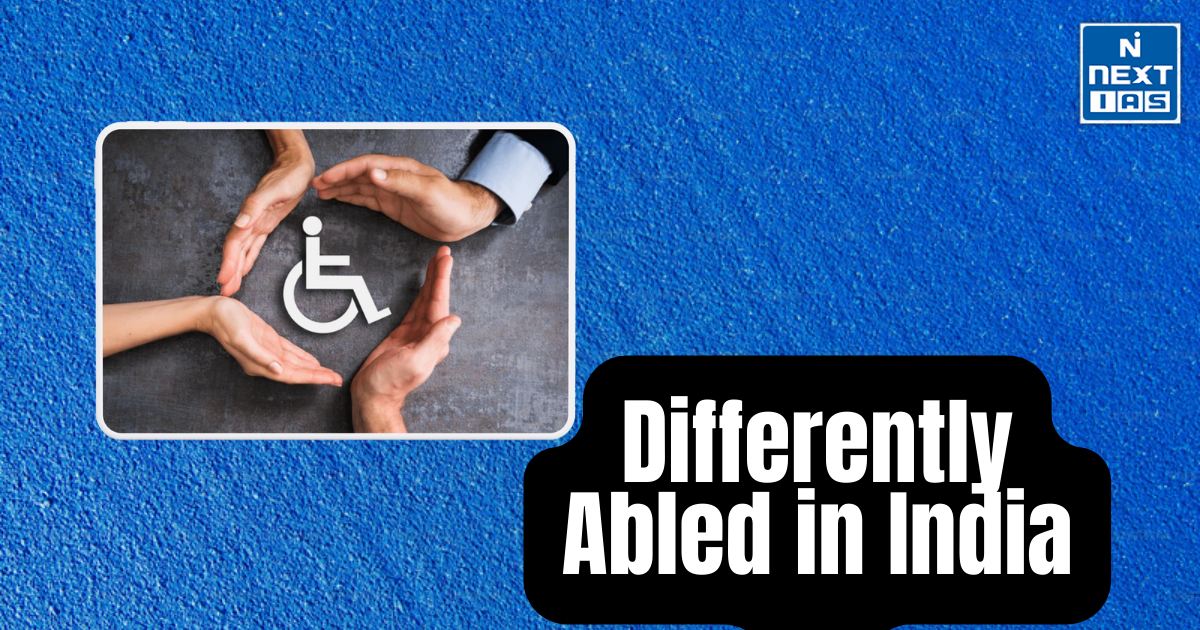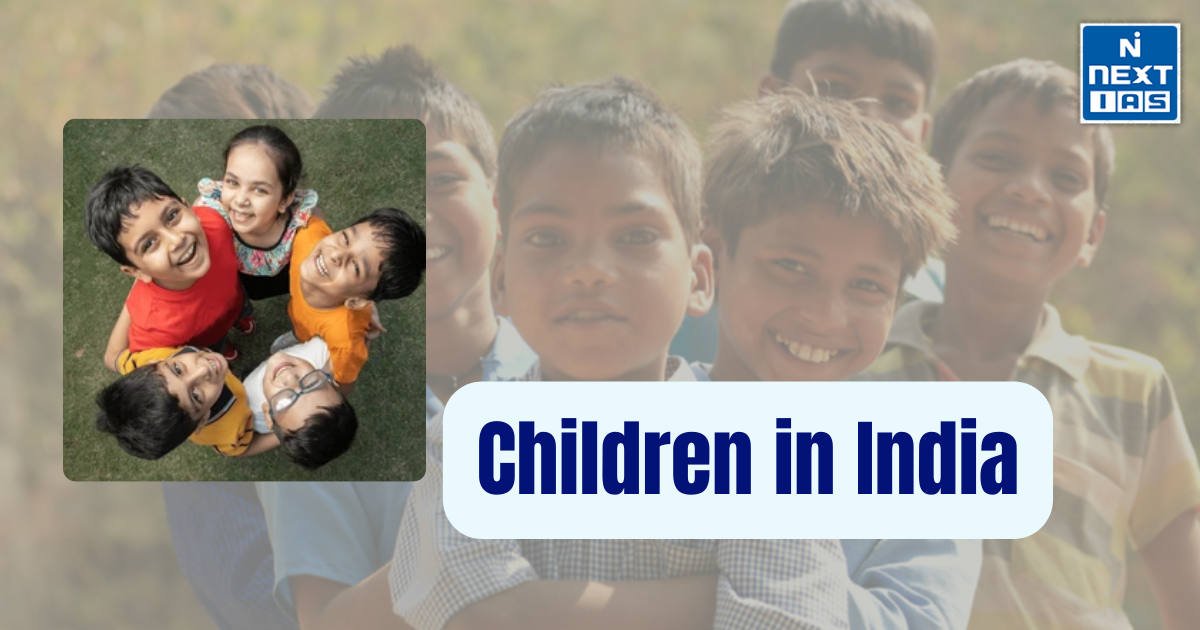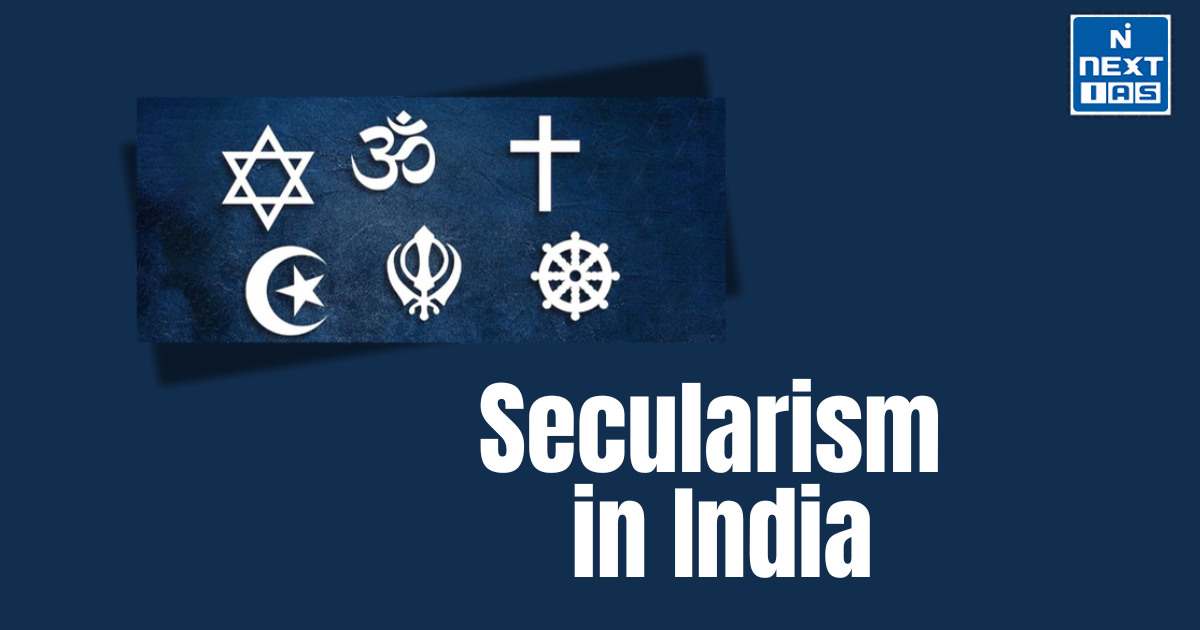
Child marriage in India refers to the practice of marrying individuals below the legal age of 18 for girls and 21 for boys, deeply rooted in socio-cultural and economic factors. It significantly impacts children’s health, education, and rights, perpetuating cycles of poverty and gender inequality. This article aims to study in detail the causes, consequences, legal frameworks, and measures to address child marriage in India.
About Child Marriage in India
- Child marriage, the practice of marrying individuals under the legal age (18 years for girls and 21 years for boys in India), remains a significant issue despite stringent laws and awareness campaigns.
- Child Marriage is rooted in poverty, cultural norms, and gender inequality, child marriage has far-reaching consequences for the physical, emotional, and economic well-being of children, especially girls.
What is Child Marriage?
- Child marriage is a social evil where children are deprived of their fundamental rights, including education, health, and personal freedom.
- Child marriage involving individuals below the legal age as per the Prohibition of Child Marriage Act, 2006.
- Prevalence: As per UNICEF (2021), India accounts for a significant share of the world’s child brides, with 223 million women married before turning 18.
Causes of Child Marriage
- Traditional Practices: Deeply ingrained cultural norms consider marriage as the ultimate goal for girls, often prioritizing it over education.
- Family Honor: Early marriages are perceived to protect family honor and prevent premarital relationships.
- Poverty: Financially strained families see child marriage as a way to reduce household expenses.
- Dowry: Marrying off girls at a young age often involves lesser dowry demands.
- Control over Girls: Patriarchal societies often marry off girls early to exert control over their lives.
- Devaluation of Girls: Daughters are seen as liabilities rather than individuals with potential.
- Illiteracy: Lack of education perpetuates ignorance about the legal and health implications of child marriage.
- Limited Access to Information: Rural and marginalized communities often lack exposure to awareness campaigns.
Consequences of Child Marriage
- Maternal Health Risks: Young brides face high risks during pregnancy and childbirth due to underdeveloped bodies.
- Infant Mortality: Children born to young mothers often have higher mortality rates.
- Disruption of Education: Girls married early are often pulled out of school, limiting their future opportunities.
- Economic Dependency: Lack of education results in fewer economic opportunities, perpetuating poverty cycles.
- Psychological Trauma: Forced marriages lead to emotional distress and mental health issues.
- Domestic Violence: Young brides are more vulnerable to abuse and exploitation in their marital homes.
- Population Growth: Early marriages contribute to higher fertility rates and population growth.
- Gender Inequality: It reinforces systemic discrimination and gender-based disparities.
Legal Framework and Government Efforts
- Prohibition of Child Marriage Act, 2006: It sets the legal marriageable age at 18 for girls and 21 for boys.
- It provides penalties for those solemnizing or promoting child marriages.
- Protection of Children from Sexual Offences (POCSO) Act, 2012: It recognizes sexual relations with minors as statutory rape, regardless of marital status.
- Right to Education Act, 2009: It ensures free and compulsory education for children up to 14 years, helping delay marriages.
- Dowry Prohibition Act, 1961: It addresses dowry demands that fuel child marriages.
Efforts to Combat Child Marriage
- Beti Bachao, Beti Padhao: It promotes gender equality and the education of girl children.
- Kanyashree Prakalpa (West Bengal): It provides financial incentives for delaying marriage and encouraging girls’ education.
- Conditional Cash Transfer Schemes: Programs like Apni Beti Apna Dhan incentivize families to keep girls unmarried till 18.
- Breakthrough India: It focuses on community-level awareness and education campaigns.
- Girls Not Brides: A global coalition working to end child marriage through advocacy and policy changes.
- Sustainable Development Goals (SDG): Goal 5 aims to achieve gender equality and eliminate harmful practices like child marriage by 2030.
- UNICEF and UNFPA Programs: Collaborative efforts to prevent child marriage through education and awareness.
Recommendations to Address Child Marriage
- Strict monitoring of child marriage hotspots to prevent illegal unions.
- Swift action and penalties for violators to create deterrence.
- To ensure universal access to quality education for girls, especially in rural areas.
- To provide scholarships and incentives for continued education.
- To pntroduce livelihood programs to reduce economic pressures on families.
- To expand conditional cash transfers tied to girls’ education and delayed marriage.
- Community engagement through local leaders, teachers, and health workers to challenge societal norms.
- To utilize media campaigns to highlight the consequences of child marriage and promote gender equality.
- To provide life skills training and vocational programs to make girls financially independent.
- To promote platforms for young girls to voice their concerns and participate in decision-making.
Conclusion
Child marriage continues to undermine the future of millions of children in India, perpetuating cycles of poverty, illiteracy, and gender inequality. Addressing this issue requires a multi-pronged approach, including stricter law enforcement, community participation, education, and economic empowerment. By collectively working towards the elimination of child marriage, India can ensure a brighter, more equitable future for its children.
GS - 2





